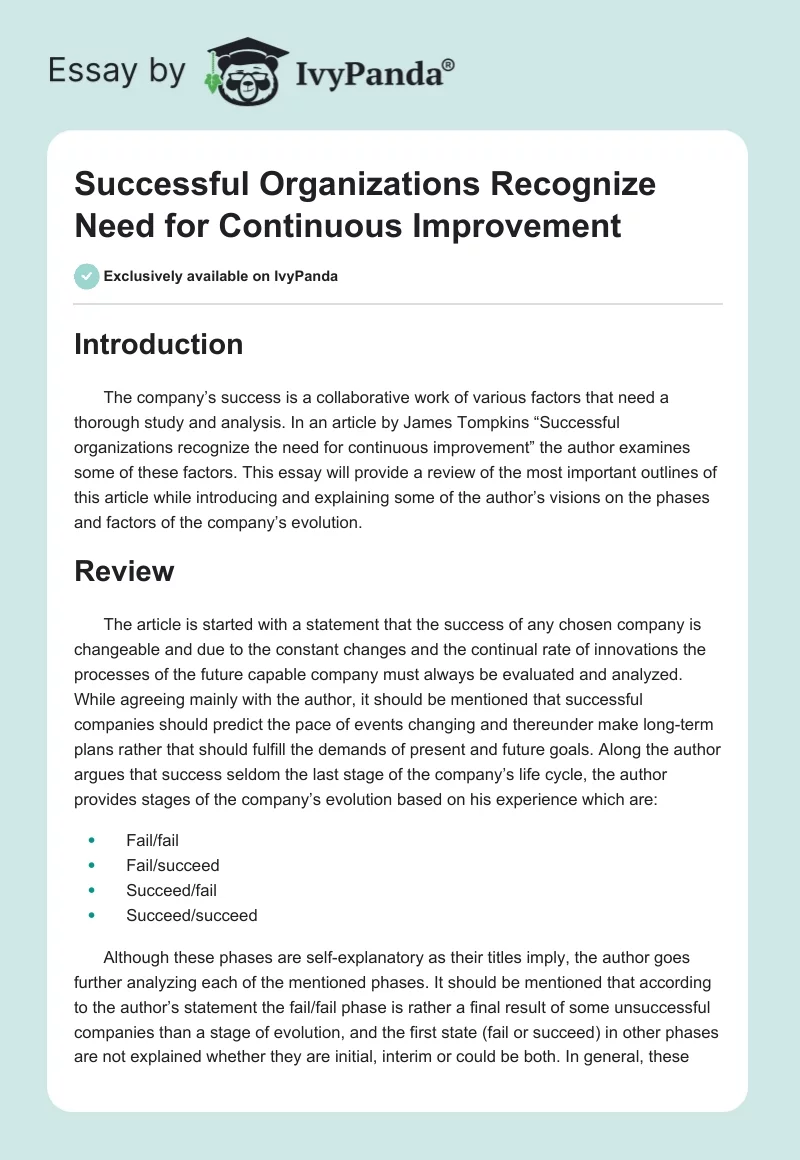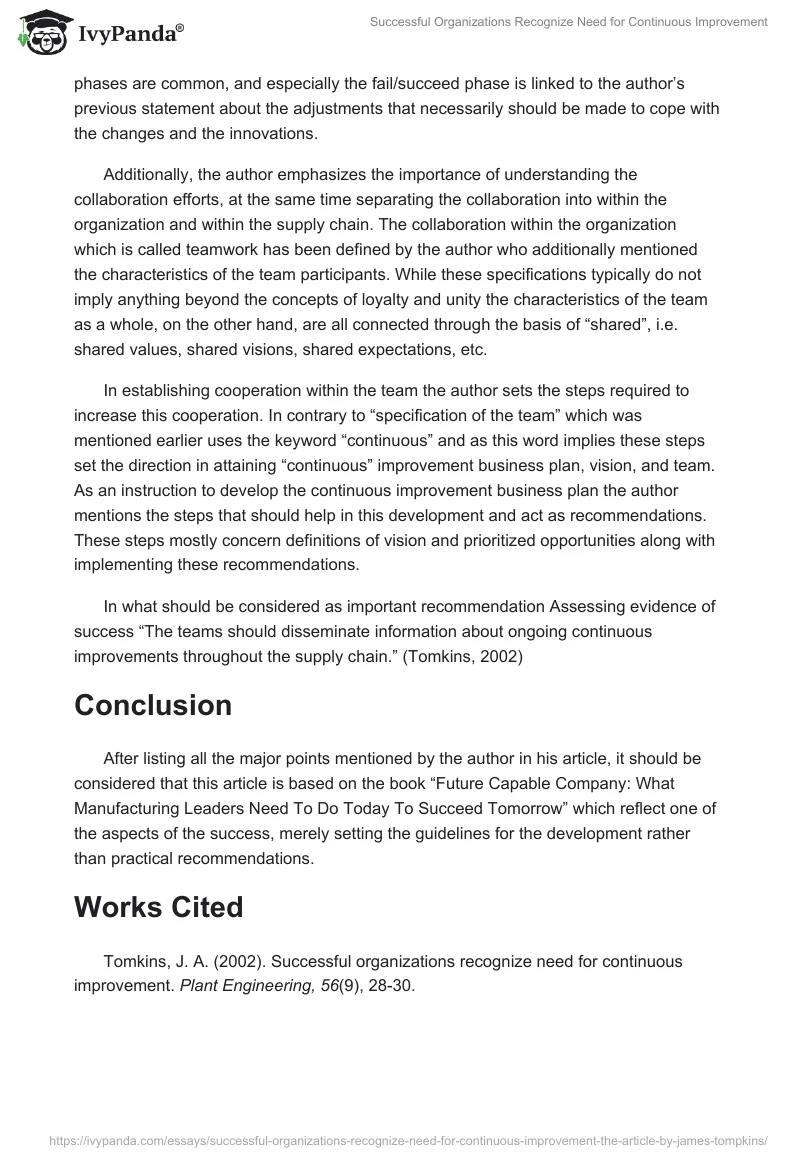Introduction
The company’s success is a collaborative work of various factors that need a thorough study and analysis. In an article by James Tompkins “Successful organizations recognize the need for continuous improvement” the author examines some of these factors. This essay will provide a review of the most important outlines of this article while introducing and explaining some of the author’s visions on the phases and factors of the company’s evolution.
Review
The article is started with a statement that the success of any chosen company is changeable and due to the constant changes and the continual rate of innovations the processes of the future capable company must always be evaluated and analyzed. While agreeing mainly with the author, it should be mentioned that successful companies should predict the pace of events changing and thereunder make long-term plans rather that should fulfill the demands of present and future goals. Along the author argues that success seldom the last stage of the company’s life cycle, the author provides stages of the company’s evolution based on his experience which are:
- Fail/fail
- Fail/succeed
- Succeed/fail
- Succeed/succeed
Although these phases are self-explanatory as their titles imply, the author goes further analyzing each of the mentioned phases. It should be mentioned that according to the author’s statement the fail/fail phase is rather a final result of some unsuccessful companies than a stage of evolution, and the first state (fail or succeed) in other phases are not explained whether they are initial, interim or could be both. In general, these phases are common, and especially the fail/succeed phase is linked to the author’s previous statement about the adjustments that necessarily should be made to cope with the changes and the innovations.
Additionally, the author emphasizes the importance of understanding the collaboration efforts, at the same time separating the collaboration into within the organization and within the supply chain. The collaboration within the organization which is called teamwork has been defined by the author who additionally mentioned the characteristics of the team participants. While these specifications typically do not imply anything beyond the concepts of loyalty and unity the characteristics of the team as a whole, on the other hand, are all connected through the basis of “shared”, i.e. shared values, shared visions, shared expectations, etc.
In establishing cooperation within the team the author sets the steps required to increase this cooperation. In contrary to “specification of the team” which was mentioned earlier uses the keyword “continuous” and as this word implies these steps set the direction in attaining “continuous” improvement business plan, vision, and team. As an instruction to develop the continuous improvement business plan the author mentions the steps that should help in this development and act as recommendations. These steps mostly concern definitions of vision and prioritized opportunities along with implementing these recommendations.
In what should be considered as important recommendation Assessing evidence of success “The teams should disseminate information about ongoing continuous improvements throughout the supply chain.” (Tomkins, 2002)
Conclusion
After listing all the major points mentioned by the author in his article, it should be considered that this article is based on the book “Future Capable Company: What Manufacturing Leaders Need To Do Today To Succeed Tomorrow” which reflect one of the aspects of the success, merely setting the guidelines for the development rather than practical recommendations.
Works Cited
Tomkins, J. A. (2002). Successful organizations recognize need for continuous improvement. Plant Engineering, 56(9), 28-30.


